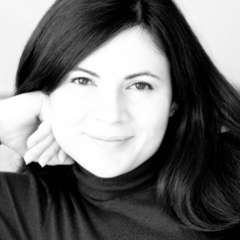By its very nature of opéra fantastique, Offenbach's The Tales of Hoffmann seemingly lends itself to diverse and imaginative staging possibilities. And yet, the challenge for a director is that of keeping the essence of the – very peculiar – story intact. Director Tom Creed is used to this challenge and I remember fondly his very successful transposition last year of Handel’s Acis and Galatea. Manipulating Offenbach, though, proves slightly more problematic.
What appears like the tale of a sentimental journey reveals itself to be, in fact, an allegorical one. Notwithstanding the highly melodic score and easy, captivating tunes contained in the opera, the work has an eminently intellectual quality to it. Offenbach plays with different styles of singing with the three main female roles (covering the full spectrum of the soprano voice), creating a sort of pastiche, almost a catalogue of opera’s heroine types. The story itself reads as a poignant metaphor of the dialectic between life and art: the way life gets in the way of art but is, at the same time, its main and essential source of inspiration.
The three lovers represent three different stages, or aspects, of love. Olympia stands for the young girl and the illusions of love (the huge eye bulb hanging from the ceiling, Coppélius' glasses). Like every illusion, the mechanical doll Olympia eventually breaks. Antonia represents sentimental love, the complications of relationships and the very conflict between life and art with her impossible choice – she too dies – between a glory-bringing singing career and the dream of domestic bliss. Giulietta represents sensual love and its frauds. No human love can last, and Hoffmann eventually rejects Stella, the real-life “synthesis” of the three, only imagined, women. Encouraged by the Muse/Nicklausse, he chooses the eternity of art over the transience of love.
Creed’s production, in a futuristic, all plastic and technicolor world, works very well in the first act, where Olympia is a robot unveiled at a party. Claudia Boyle (playing off four of “Hoffmann's women”) perfectly played this modern mechanical doll, and her robotic movements synchronised with the famous, virtuosic “Les oiseaux dans la charmille” producing an hilarious effect which was the main crowd-pleaser of the evening.
The brilliance of this effortless parallel, however, is not replicated in the third and fourth acts. The most vivid and complex of the four female characters, Antonia, is relegated for the entire act to a hospital bed, with the effect of visually smoothing her gentle vitality and ambivalence. So the unscrupulous Venetian courtesan Giulietta, ready to sell Hoffmann’s soul to the devil for a diamond, becomes a diva artist of Venezia’s Biennale, loosening up even more the ties with the original.
While Sinéad McKenna's lighting is effective and functional, some of Katie Davenport's costumes work better than others. All of the evil incarnations of Lindorf, Hoffman’s rival, seem fantastically and imaginatively inspired, but most of the female protagonists’ costumes (with the exception of Olympia) seemed to work against the narrative. In particular, Nicklausse’s unattractive costume flattens out the complexity of the character. Albeit a trousers role, Nicklausse represents the Muse as well, disguised as Hoffmann’s friend. As such, he could have been represented in a more feminine way, to signify the seduction of art.
The famous barcarolle, “Belle nuit, ô nuit d’amour”, possibly the most sensuous love song in opera, suffered the weight of its own notoriety and it came across as somewhat underwhelming.
Mezzo-soprano Gemma Ní Bhriain (Nicklausse) displayed a lovely voice and singing throughout the evening. Julian Hubbard was consistently good in the title role, being particularly convincing in the passionate duet with Giulietta (“Ô Dieu, de quelle ivresse”). John Molloy played the various evil roles (Lindorf, Coppélius, Miracle, Dappertutto) and – not uncommonly – stole the show in each and every one of the scenes where he was present, except one: the duet with Brendan Collins as Crespel, Antonia’s father, in the third act. Here we had the unusual pleasure of listening to the two great Irish basses singing together, each with their own distinctive timbre; it was quite a show, easily the highlight of the evening. Among the secondary roles, Carolyn Holt as the voice of Antonia’s mother stood out with her rich and seductive mezzo-soprano.
The choral scenes were all powerful and cohesive, but what struck me was the unexpected vigour of such a reduced orchestra: only seven players, including Andrew Synnott conducting from the piano. For some alchemic combination, at no given point in the evening it felt like we were missing any players, so effective was the musical arrangement and performance.
Overall, INO’s production was a highly entertaining one with some memorable moments. Hopefully they’ll keep striving to find the perfect balance between winning new audiences to opera and satisfying the existing ones.




